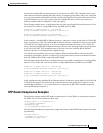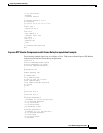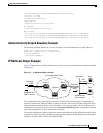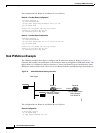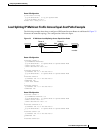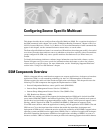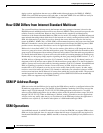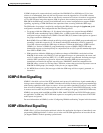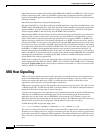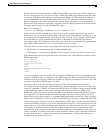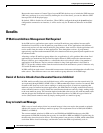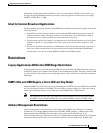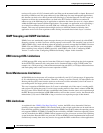
IPC-459
Cisco IOS IP Configuration Guide
Configuring Source Specific Multicast
This chapter describes how to configure Source Specific Multicast (SSM). For a complete description of
the SSM commands in this chapter, refer to the “IP Multicast Routing Commands” chapter of the Cisco
IOS IP Command Reference, Volume 3 of 3: Multicast. To locate documentation of other commands that
appear in this chapter, use the command reference master index, or search online.
The Source Specific Multicast feature is an extension of IP multicast where datagram traffic is forwarded
to receivers from only those multicast sources to which the receivers have explicitly joined. For multicast
groups configured for SSM, only source-specific multicast distribution trees (no shared trees) are
created.
To identify the hardware platform or software image information associated with a feature, use the
Feature Navigator on Cisco.com to search for information about the feature or refer to the software
release notes for a specific release. For more information, see the “Identifying Supported Platforms”
section in the “Using Cisco IOS Software” chapter.
SSM Components Overview
SSM is a datagram delivery model that best supports one-to-many applications, also known as broadcast
applications. SSM is a core networking technology for the Cisco implementation of IP multicast
solutions targeted for audio and video broadcast application environments. This chapter discusses the
following Cisco IOS components that support the implementation of SSM:
• Protocol Independent Multicast source specific mode (PIM-SSM)
• Internet Group Management Protocol Version 3 (IGMPv3)
• Internet Group Management Protocol Version 3 lite (IGMP v3lite)
• URL Rendezvous Directory (URD)
PIM-SSM is the routing protocol that supports the implementation of SSM and is derived from PIM
sparse mode (PIM-SM). IGMP is the Internet Engineering Task Force (IETF) standards track protocol
used for hosts to signal multicast group membership to routers. Version 3 of this protocol supports source
filtering, which is required for SSM. To run SSM with IGMPv3, SSM must be supported in the
Cisco IOS router, the host where the application is running, and the application itself. IGMP v3lite and
URD are two Cisco-developed transition solutions that enable the immediate development and
deployment of SSM services, without the need to wait for the availability of full IGMPv3 support in host
operating systems and SSM receiver applications. IGMP v3lite is a solution for application developers
that allows immediate development of SSM receiver applications switching to IGMPv3 as soon as it
becomes available. URD is a solution for content providers and content aggregators that enables them to



